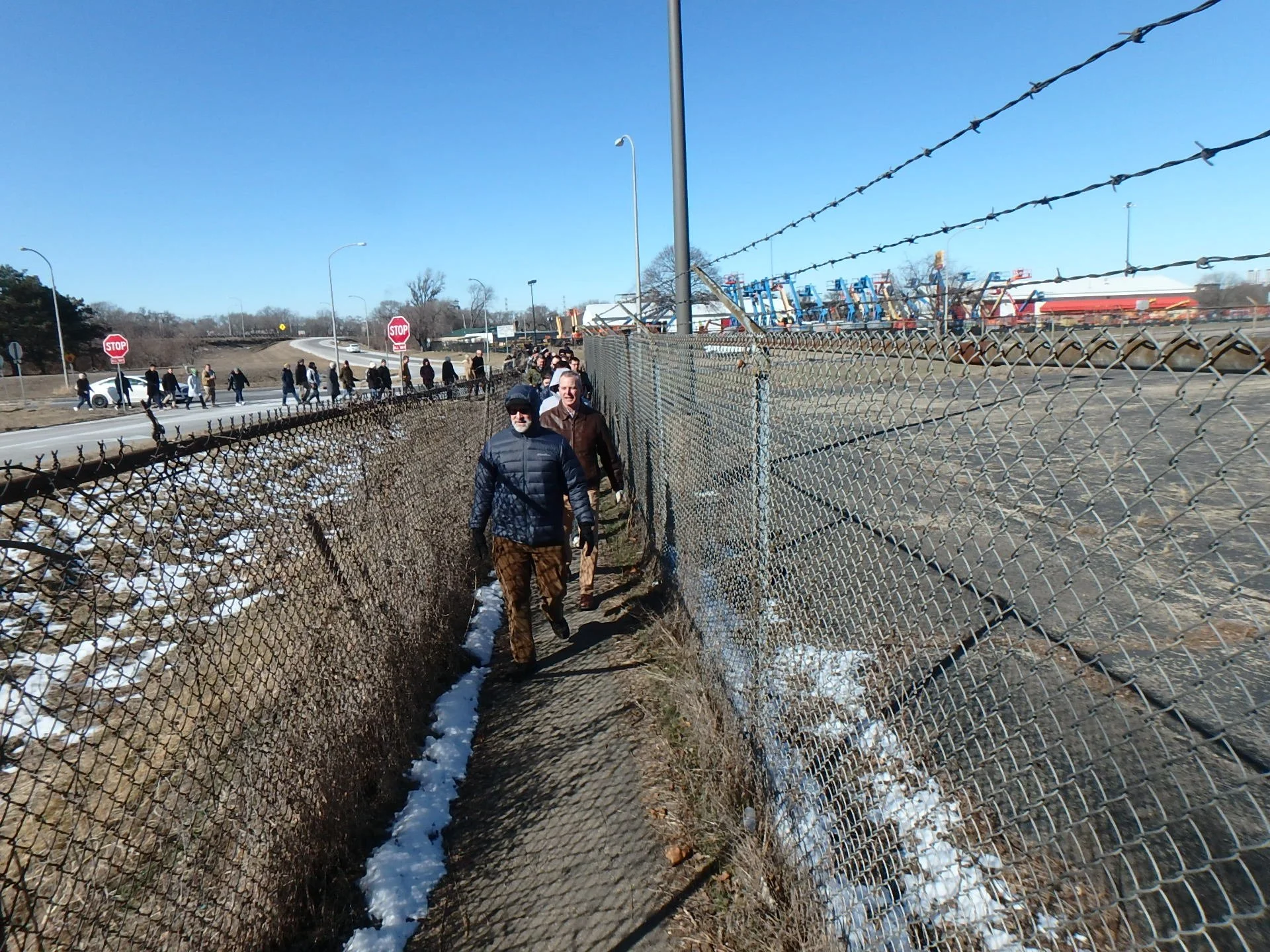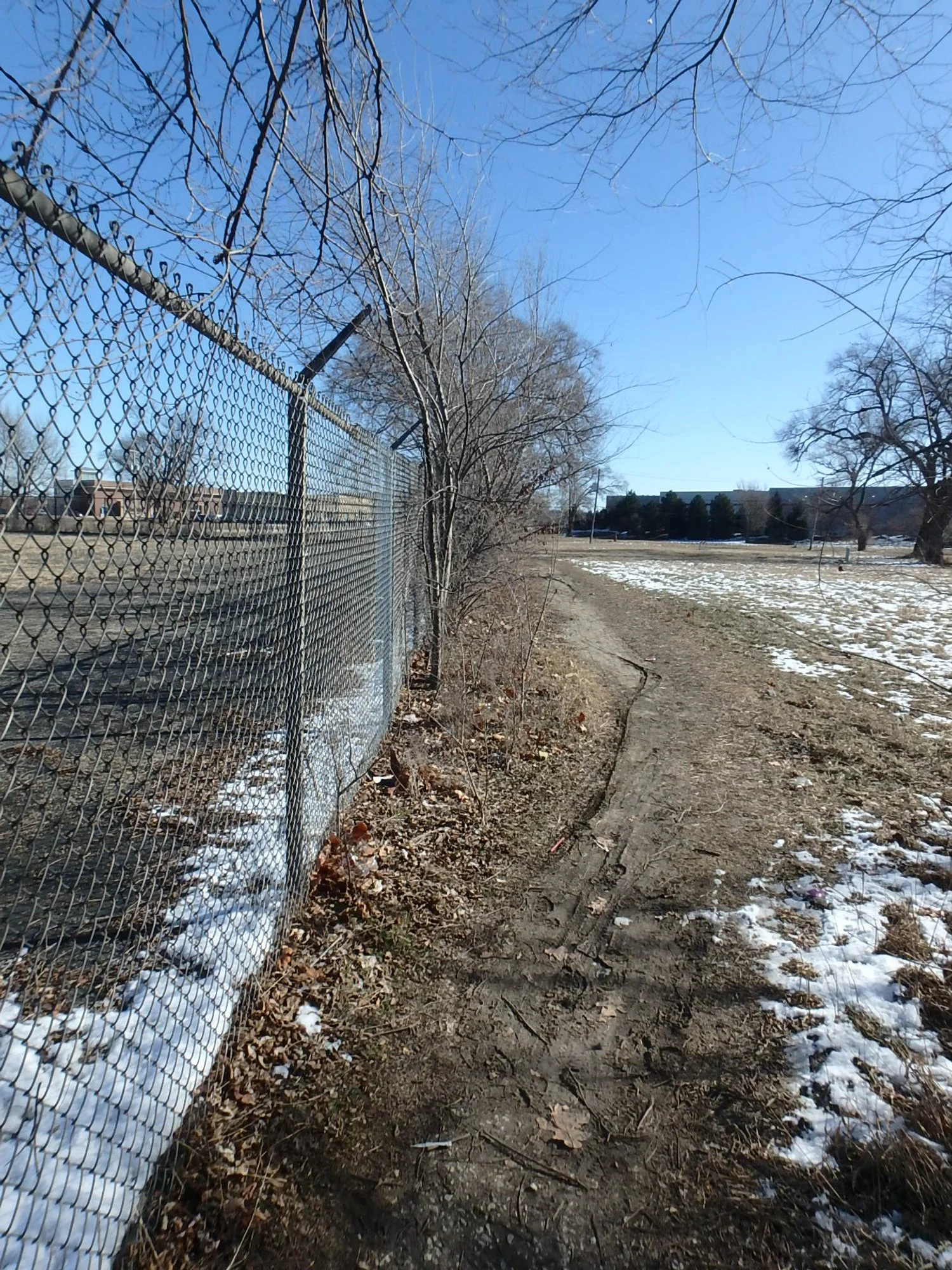Peoria Takes a Walk—And Steps Toward Reforming Its Transportation System
Across North America, people are beginning to think differently about how we build our cities. Public and private community leaders in greater Peoria, Illinois, are no exception: they’re getting out on the ground and physically taking in the transportation abilities of their city. Through a series of walk audits, they are not only observing the urban environment, but starting to understand how small, simple actions can profoundly shape it.
On their latest walk audit in February 2023, a group of locals—including a local transportation engineer—were led by Mark Fenton, an activist and transportation consultant who helps communities figure out how to build more walkable places.
On their walk, the group observed a corner of the city by East Peoria, from a downtown shopping area to a nearby neighborhood. They discovered there were no sidewalks for a significant length of the stretch, but there was a wide road, and clear, muddy pathways filled with shoe prints and bike marks showed that despite the area not being designed for people on foot, people were using it.
“Everybody acknowledged [the neighborhood] had a pretty wide road. And very little vehicle traffic went by us during the time that we walked through there,” said Fenton.
In one of the spaces where there was a dedicated walking area with a sidewalk, it felt uncomfortable and out of place—like people didn’t belong there.
“We came through this area, which is bizarre, there's a sidewalk with chain link fences,” said Fenton. “People literally said ‘are we supposed to be going here?’ And the reason that that was interesting was because when we came out the backside we could see footprints and mountain bike tracks. Clearly, people from that neighborhood use this as a shortcut to cut back over to the retail area.”
As they found evidence of people walking in areas not designed for walking along their trek, the group talked about tactical urbanism solutions that could help redevelop the space. The group also engaged in discussions with Fenton before and after their walk, discovering ways how, through design, people walking and biking can be more than just an “afterthought.”
“During my talk, I showed some of the simple treatments,” said Fenton. “You could just paint a pedestrian lane, create a shoulder, and make it safer than it is right now and at least let drivers know [there’s people walking].”
Peoria has a typical transportation layout of many cities throughout America: wide roads, a design focused on getting cars to places versus accommodating people who walk, and an excess of underutilized parking spaces. But now, a shift in thinking is underway in Peoria, spearheaded by local public health leaders with the hopes of creating safer streets (Illinois Public Health Institute, Illinois State Alliance of YMCAs, Peoria City/County Health Department, Peoria YMCA, and Tri-County Regional Planning Commission, to name a few). This consortium of organizations has sponsored a series of educational events and transportation projects, supported by a mix of public health grants. Leaders in Peoria are saying that public health is greatly affected by how we build our cities, and that’s part of why they’re working to try and change the built environment of their city.
“This [walking audit] is one piece of that larger conversation we’re having in Peoria about walkability,” said Anthony Corso, who was previously with the City of Peoria in a sustainability role, with a strong focus on active transportation and putting a Complete Streets policy in place.
Fenton has come to Peoria two other times throughout the past few years to conduct walk audits and help show how streets can be designed to accommodate all modes of transportation. Strong Towns President Charles Marohn also visited the city in 2015, where he took locals on a walk through Peoria’s downtown to discuss how it could be a safer, more productive, and more walkable place.
Ray Lees, a member of the Tri-County Regional Planning Commission, also noticed Peoria was in need of transformative action to implement better transportation on his routine commute across the Illinois River, splitting Peoria and East Peoria. Rain or shine, from the comfort of his own vehicle, he noticed people walking across the Bob Michael Bridge on an unprotected sidewalk hardly five feet wide.
The speed limit along the bridge is 40 mph, “and people, they speed,” said Lees. “We have really been lucky that nobody has been injured on that bridge.”
After some research, Lees learned that, between 271 miles of river, there were only two bridges with a protected walking path—and they were nearly 267 miles apart, closest to the large metropolitan cities Chicago and St. Louis. It was obvious to Lees that there was an unequal opportunity for locals to travel safely about the city.
“There's a transit center at the end of this bridge,” said Lees. “And there's a huge Walmart, across the river. And so a lot of folks are crossing over there doing their shopping and whatnot.”
On his realization of how unsafe transportation across the bridge was, Lees added, “It just hit me: ‘What is this society, where if you don't get on a bus, or you don't own a car, you can’t cross from one side of the river to another’?”
Through a lot of work, talking to multiple city officials, and being told a change to the bridge could never happen because it’s under the Illinois Department of Transportation, Lees did find a path through the Rebuild Illinois program to get the bridge redesigned.
Now, by the end of 2023, the bridge will have a 14-foot-wide walking and biking path with a concrete protective barrier.
When local leaders think critically about how to implement safe and productive streets, substantial change can happen. Peoria is embracing the understanding that our communities become more prosperous when everyone, regardless of how they are traveling, can get to their destination safely and comfortably.










Michael Schneider, founder of Streets for All and the campaign manager for Healthy Streets Los Angeles, joins us today on Upzoned to talk about the recent ballot proposal, Measure HLA.